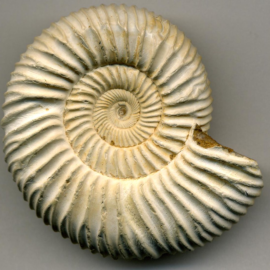

This article is an excerpt from the Shortform summary of "The Immortal Life of Henrietta Lacks" by Rebecca Skloot. Shortform has the world's best summaries of books you should be reading.
Like this article? Sign up for a free trial here .
Who was the doctor that Henrietta Lacks saw when she got her cancer diagnosis? How did Howard W. Jones attempt to treat her? Did he find other conditions that would explain her rapid decline?
Howard W. Jones was a gynecologist at Johns Hopkins when Henrietta Lacks came in with a lump. Jones put Henrietta on a radium treatment course though she eventually succumbed to the cancer.
Read about Howard W. Jones and his unsuccessful treatment of Henrietta’s cancer.
Howard W. Jones Diagnoses Henrietta Lacks With Cancer
In 1950, before she became pregnant with her fifth child, Joseph, Henrietta told two cousins that she felt a “knot” in her abdomen. Although the relatives suggested Henrietta see a doctor, she didn’t end up going. One of the relatives believed Henrietta didn’t go because she was afraid the doctor would remove her womb and prevent her from having more children. Shortly after Henrietta confided in her relatives, she became pregnant, and talk about the knot faded.
Four and a half months after Joseph was born, however, Henrietta discovered blood in her underwear. She ran a hot bath and performed a self-examination on her cervix. She found a lump next to the opening of her womb.
Henrietta visited Johns Hopkins, where she was seen by a gynecologist named Howard W. Jones. Jones discovered in Lacks’s medical history an array of un- or undertreated illnesses, including asymptomatic neurosyphilis and gonorrhea. There was also abnormal vaginal bleeding and blood in Henrietta’s urine after her last two pregnancies.
Upon examining Henrietta, Howard W. Jones quickly located the lump, whose color and consistency was unlike any other lesion he’d seen (he described it in his notes as “grape Jello”) Even though Joseph had been delivered at Hopkins scant months before, no one had noted any sort of cervical abnormality, either upon delivery or at Henrietta’s six-week checkup. Which meant the lump had grown exponentially in just three months.
A few days later, Jones received Henrietta’s biopsy results. The pathologists had found Stage 1 epidermoid carcinoma.
Henrietta’s Cells Excised
Henrietta, unbeknownst to her, became one of TeLinde’s and the Geys’ subjects. When she returned to the hospital after receiving her diagnosis—rather than tell Day or her family that she’d been diagnosed with a malignant tumor, she simply told them the doctors needed to evaluate her and give her some medicine—she signed a consent form to be operated on, was subjected to a battery of tests, and eventually treated with radium, the gold standard for cancer treatment at the time. (It was later discovered to cause cancer itself.) Before her surgeon applied the radium to her cervix, however, he took a small sample of both healthy tissue and cancerous tissue and sent it off to the Geys’ lab.
Henrietta Lacks’ Treatment and Side Effects
At first, the radium seemed to have worked. Near the end of her month of radiation, Henrietta asked her doctor when she would be well enough to have children again. Hopkins protocol was to notify patients that cancer treatment often led to infertility, but it seemed, in Henrietta’s case, the warning wasn’t given.
There were other physical complications as well. After three weeks of radiation, Henrietta complained of severe pain while urinating, and Day noticed a discharge of his own (which he blamed on Henrietta’s “sickness”). The culprit was gonorrhea; and Howard W. Jones, Henrietta’s gynecologist, opined that Day had likely given it to her. The radiation had also burned the skin of Henrietta’s abdomen black.
The Two Sides of HeLa
The cells’ resiliency, which made them so valuable to researchers, was less welcome in terms of Henrietta’s health. According to Henrietta’s doctors, the radium and X-ray treatments had rid her of cancer; yet she maintained the cancer was spreading: She said she could feel it. She returned to the hospital twice, first with abdominal discomfort, then with an ache along her sides, but the doctors sent her home each time, writing in her record that there was no evidence that her cancer had come back.
Returning to the Hospital Over and Over
A matter of weeks after her second visit, when she’d complained of an ache and the doctors sent her home, Henrietta returned to the hospital with sharp pain in her abdomen and difficulty urinating. A doctor administered a catheter to help her urinate and again sent her home. Two days later she was back, again with pain, and the doctor on duty felt a hard mass when he pressed on her belly. An X-ray revealed a tumor attached to her pelvic wall. When Howard W. Jones arrived, he declared the tumor terminal and sent Henrietta home to bed.
Shortly thereafter, one week after her 31st birthday, Henrietta was admitted to the hospital. At home she’d suffered from such severe pain that she screamed for God to help her; at her intervening appointments, doctors had discovered tumors on her uterus, urethra, and both kidneys.
Henrietta’s Death
Henrietta died in October 1951. In the two months she was in the hospital, tumors had colonized her body, appearing as high as her diaphragm and lungs, and she’d needed constant blood transfusions because her kidneys were failing. The pain was tremendous. Her last words were to her sister Gladys. She implored her to make sure Day took care of the children.

———End of Preview———
Like what you just read? Read the rest of the world's best summary of Rebecca Skloot's "The Immortal Life of Henrietta Lacks" at Shortform .
Here's what you'll find in our full The Immortal Life of Henrietta Lacks summary :
- How Henrietta's cells became used in thousands of labs worldwide
- The complications of Henrietta's lack of consent
- How the Lacks family is coping with the impact of Henrietta's legacy






